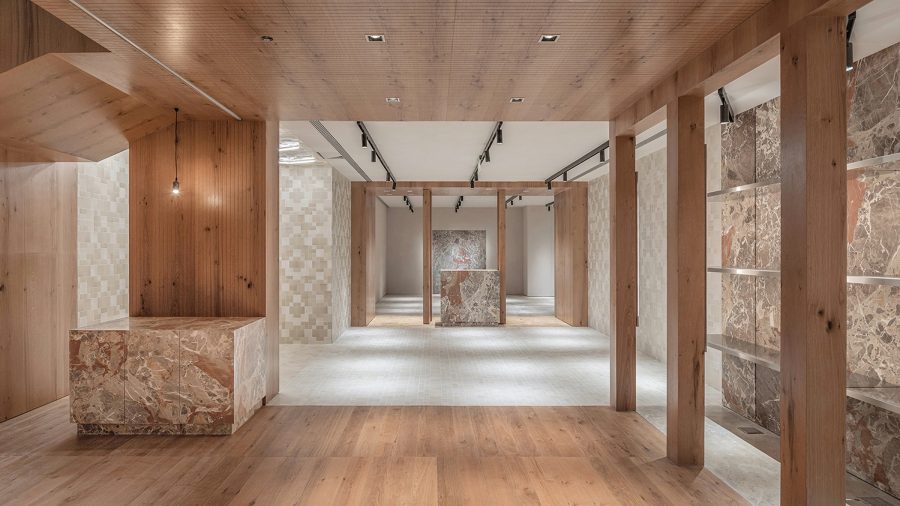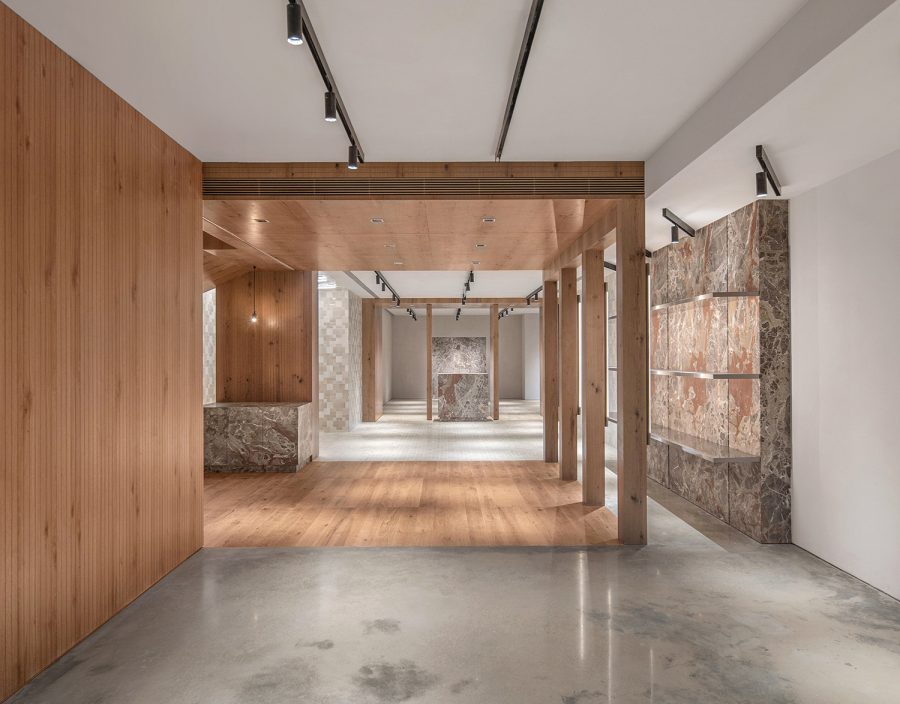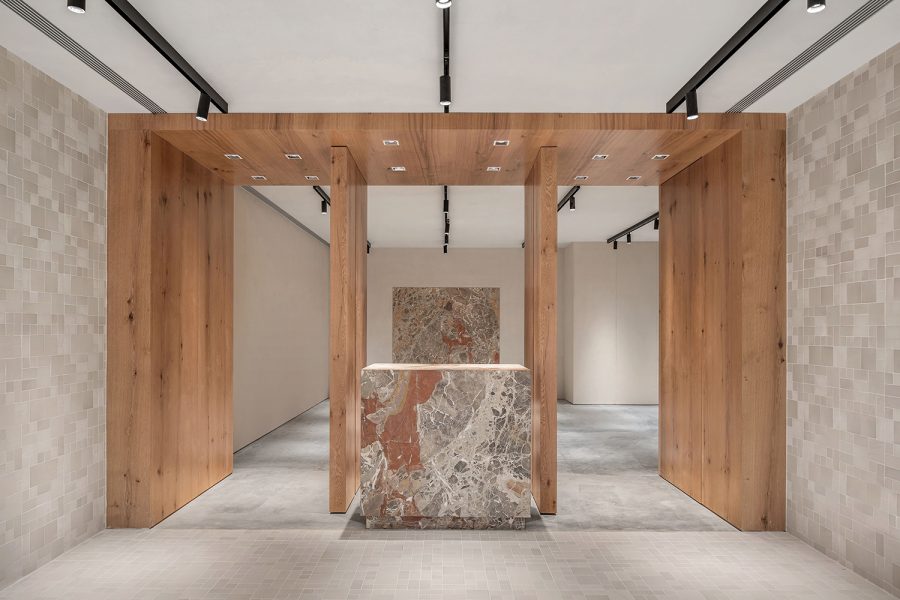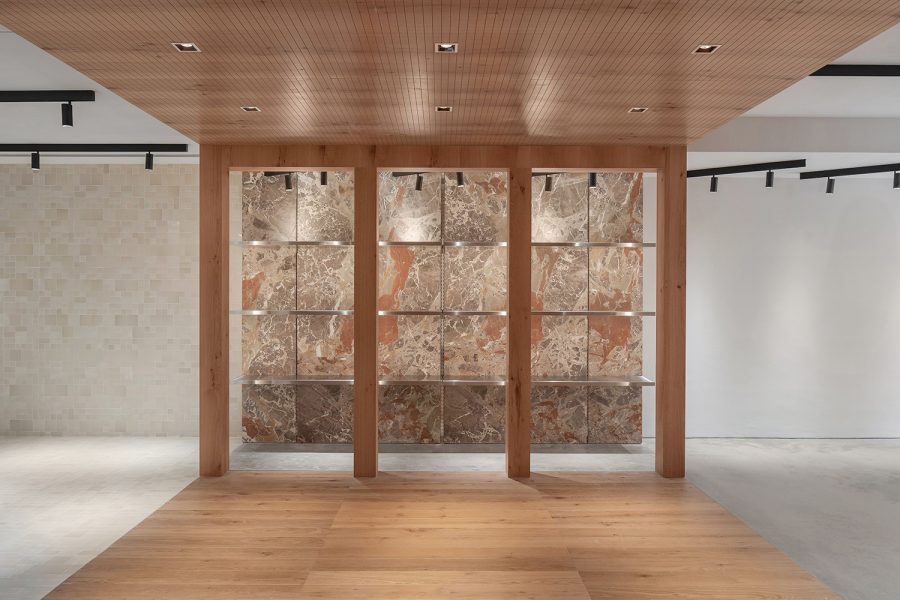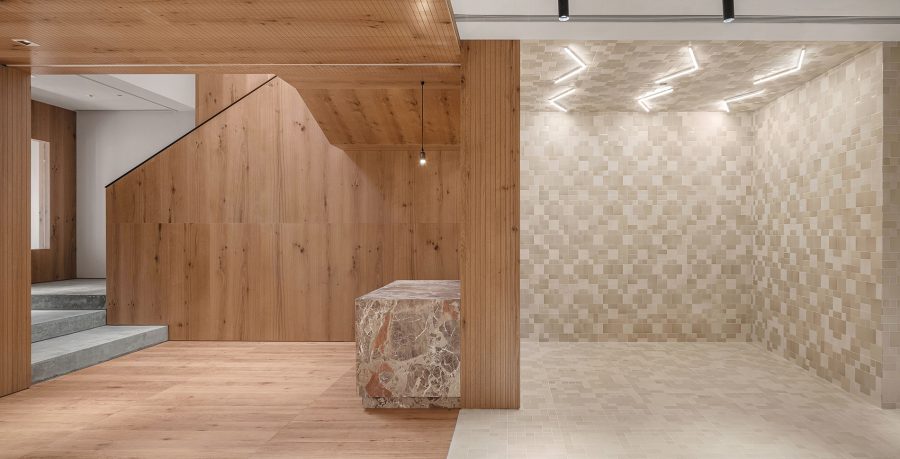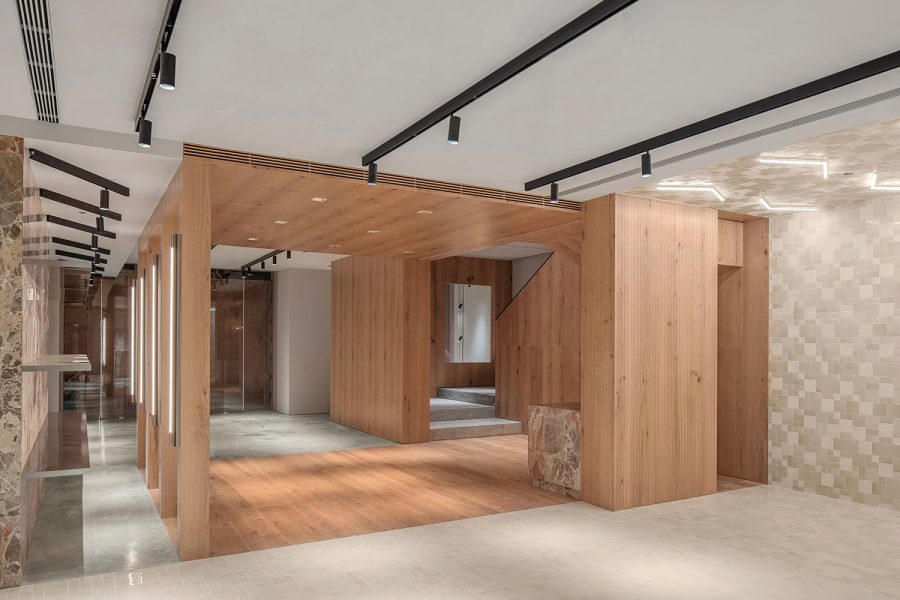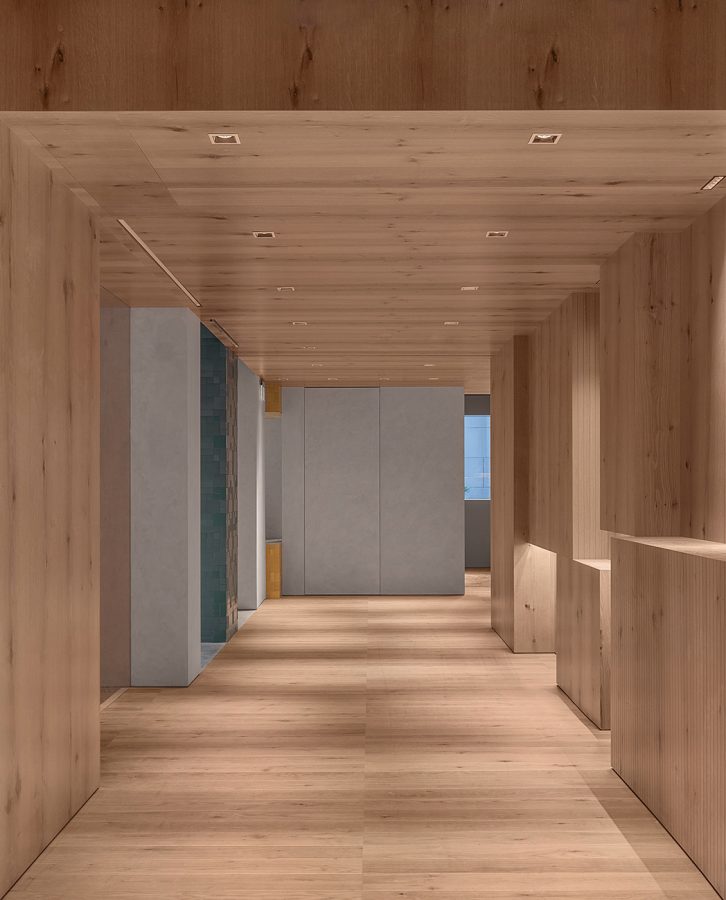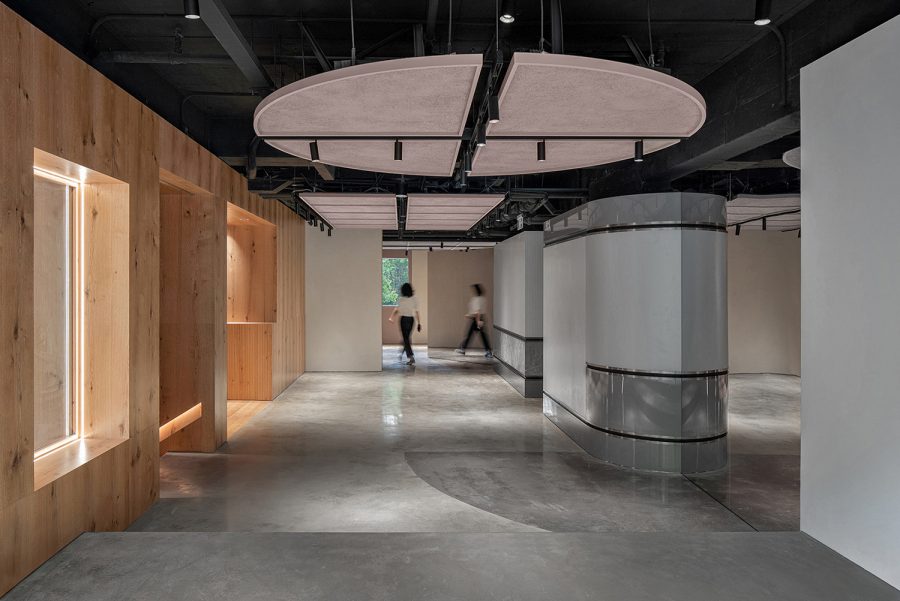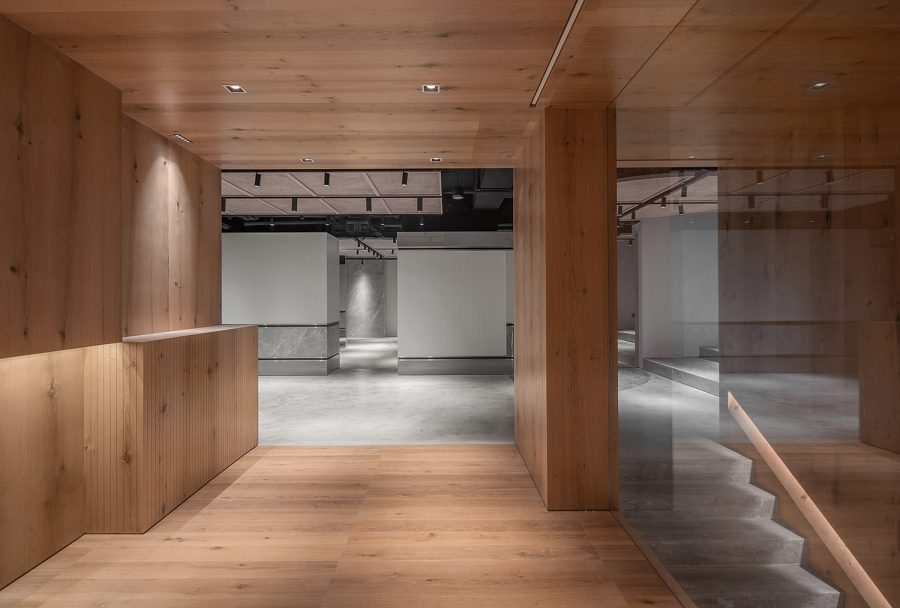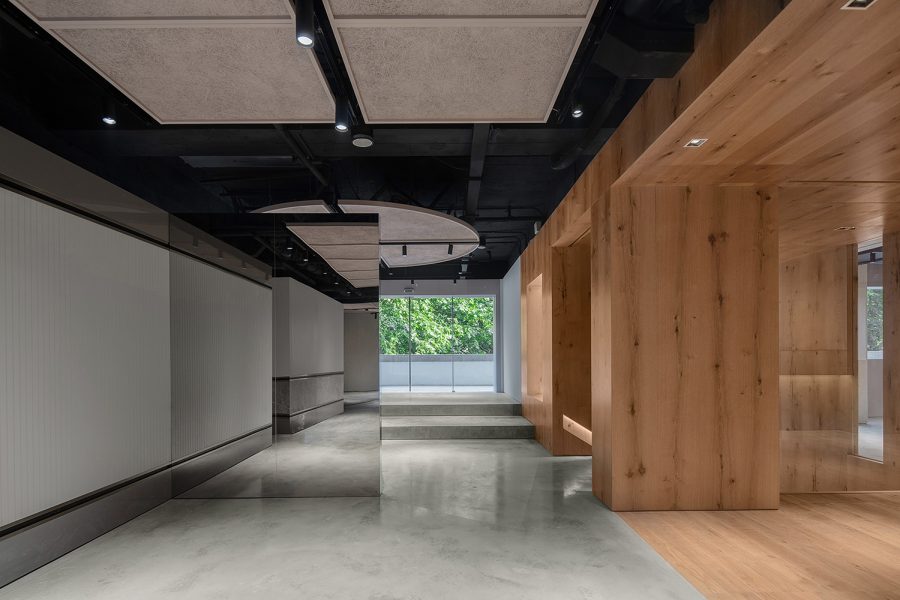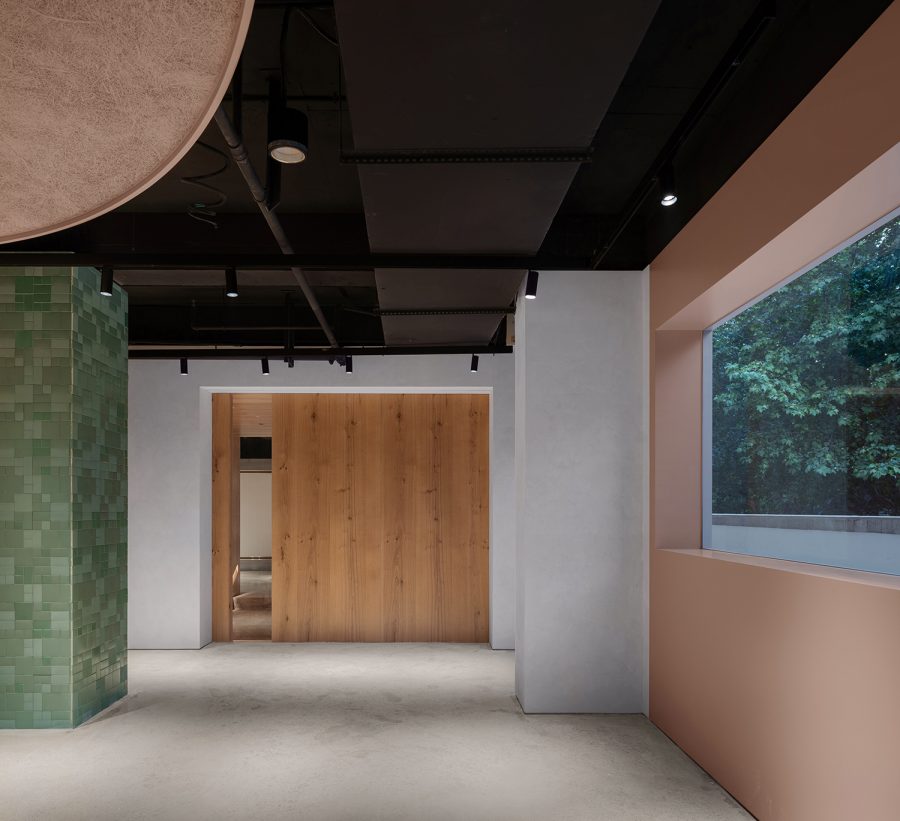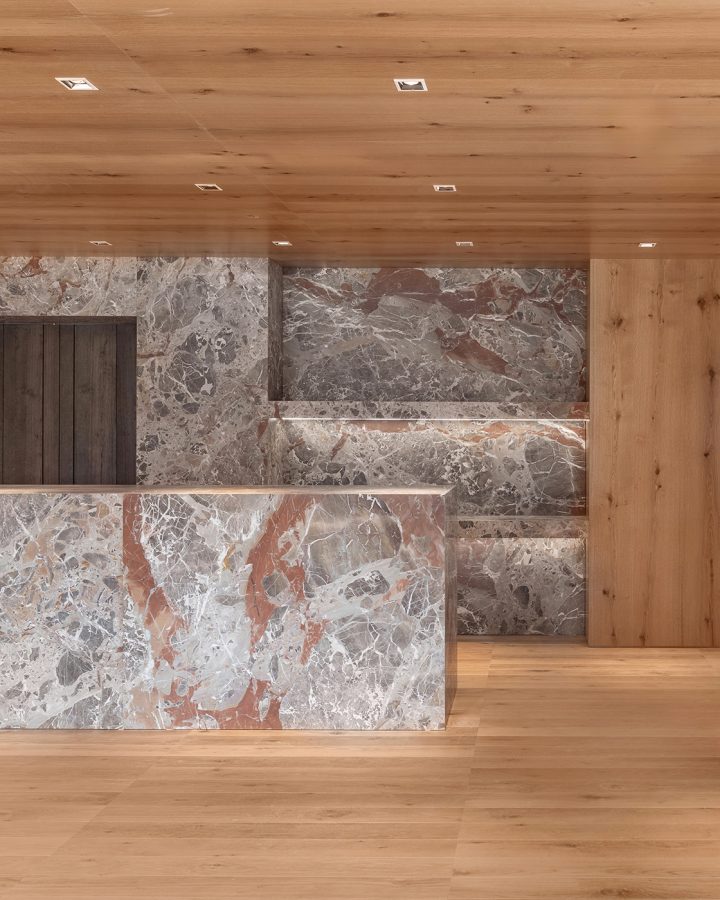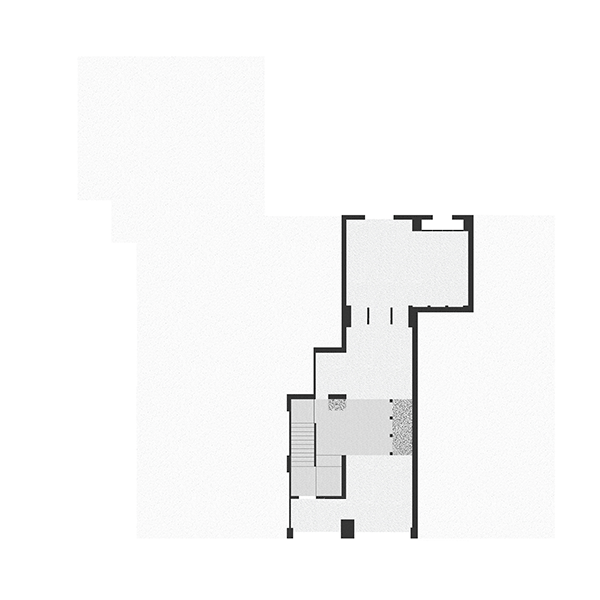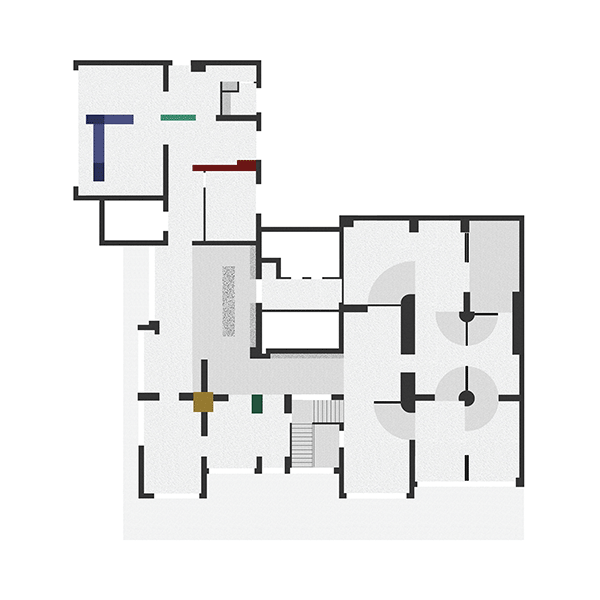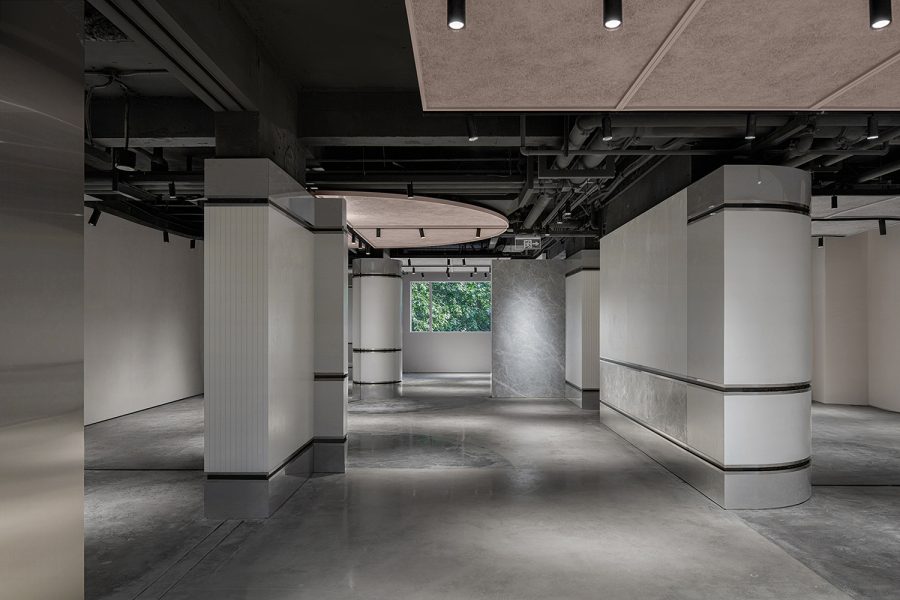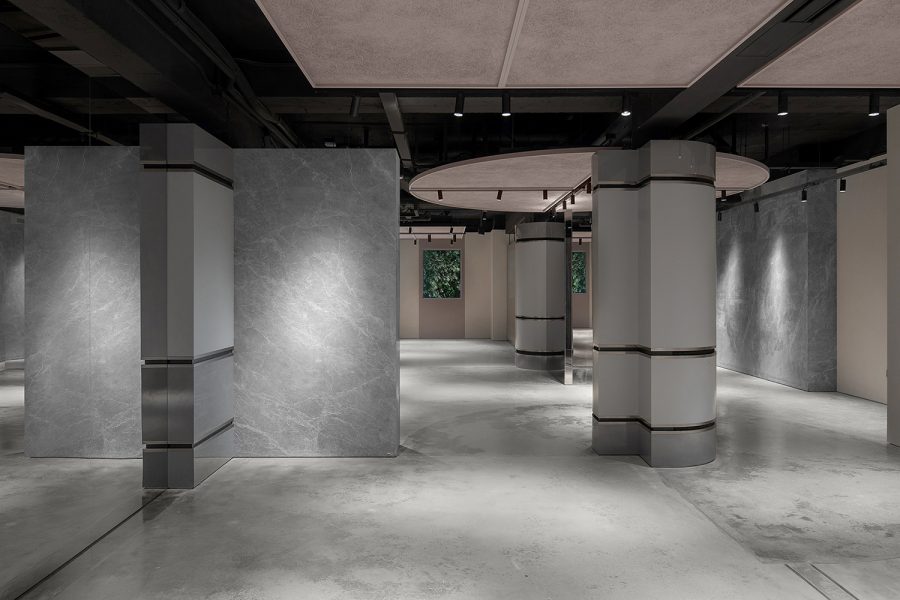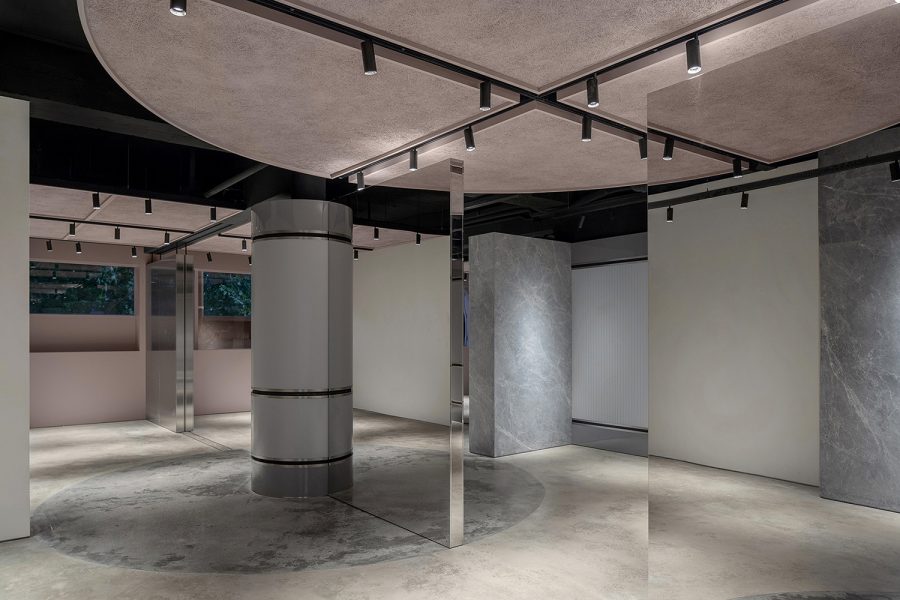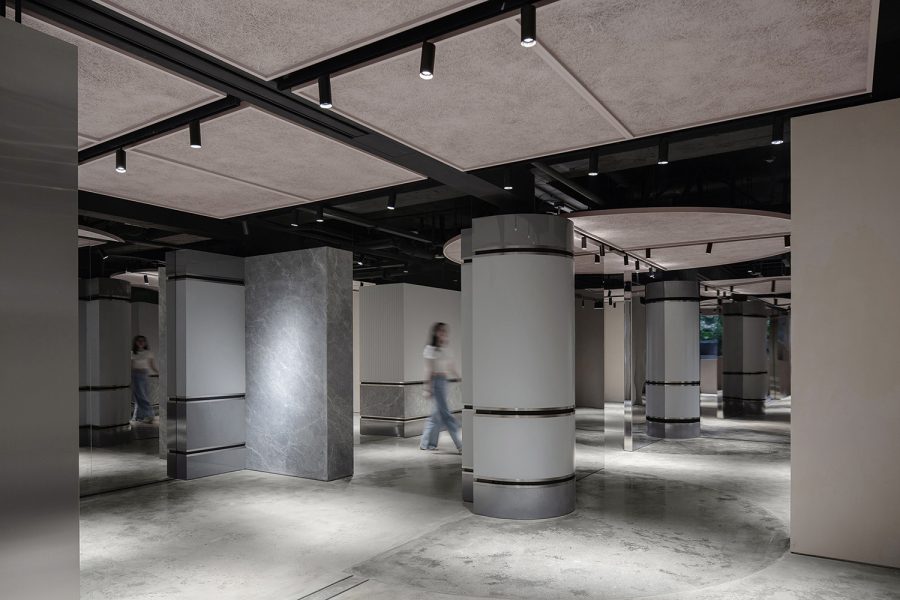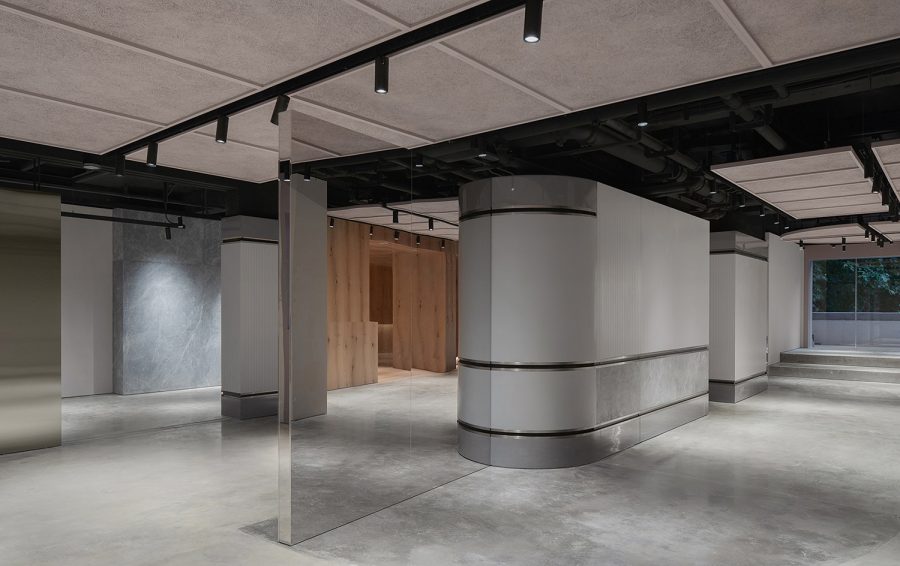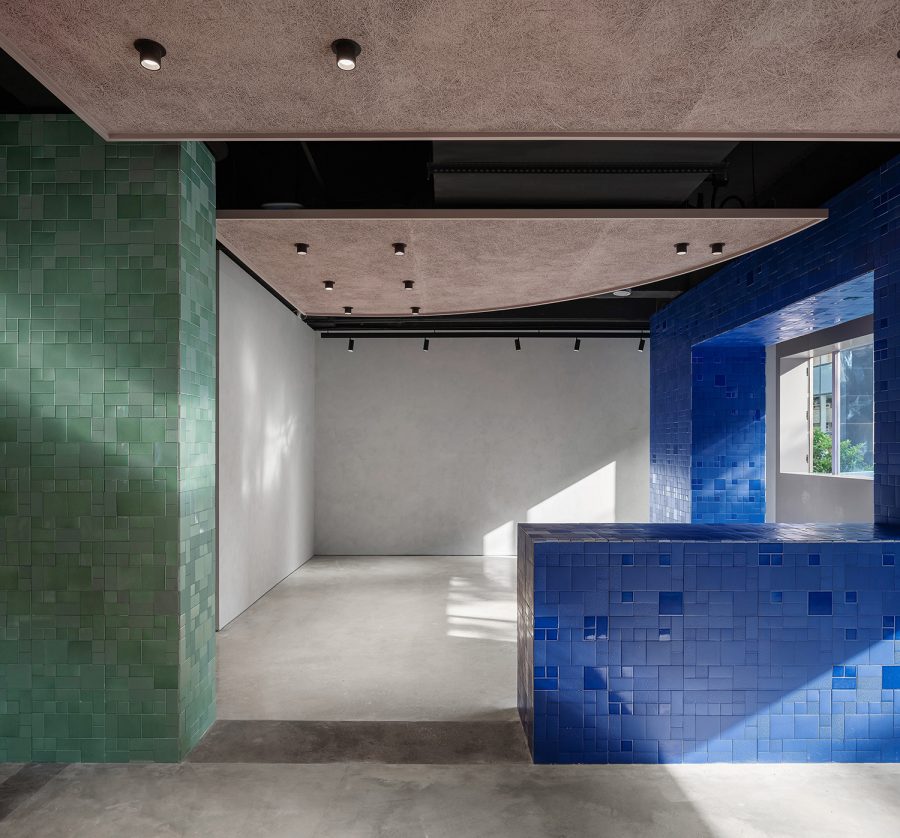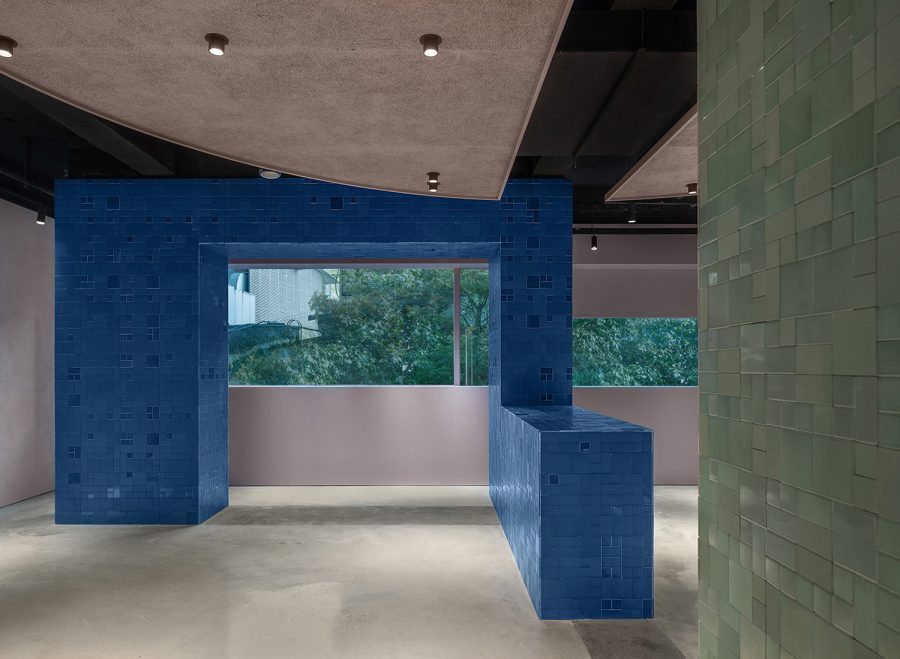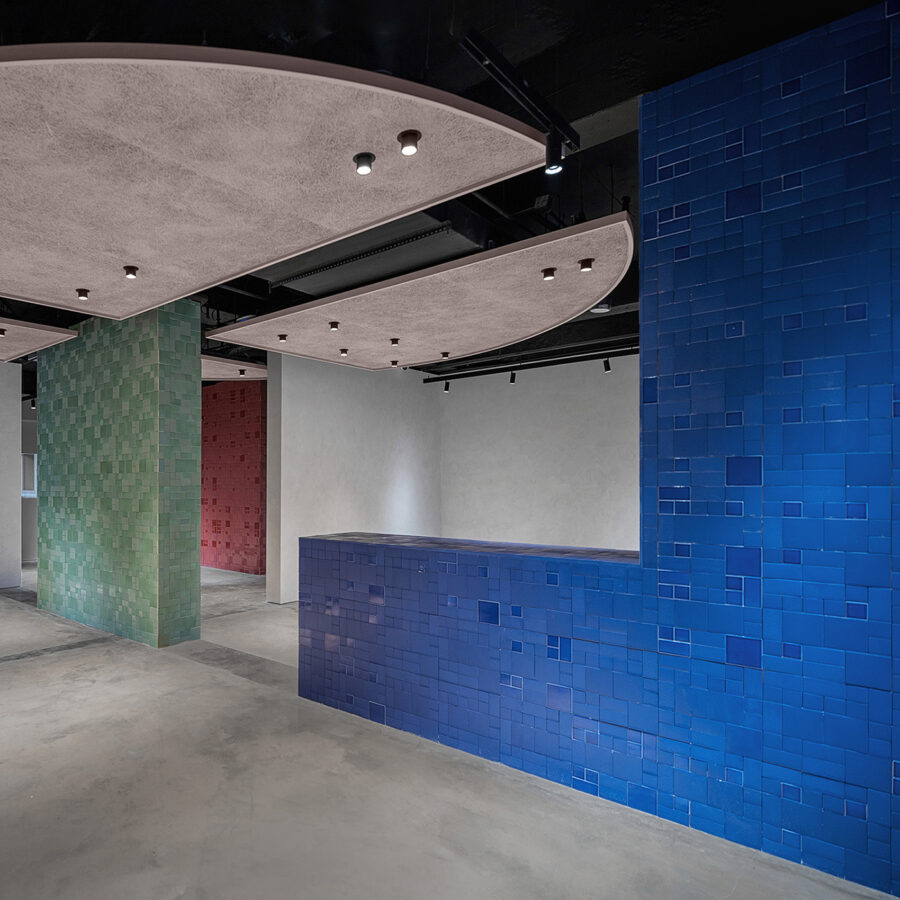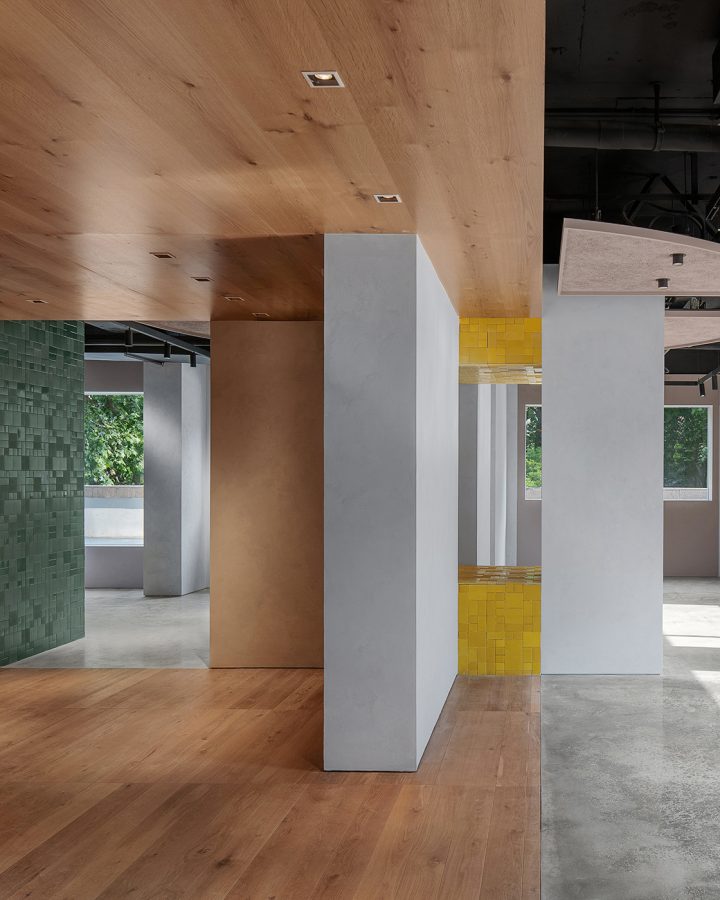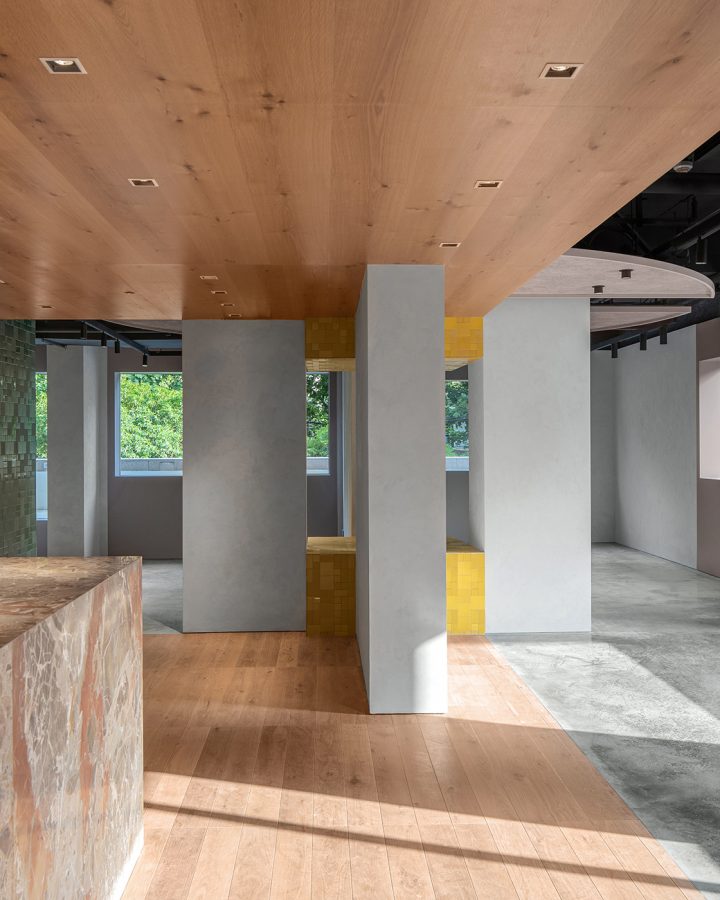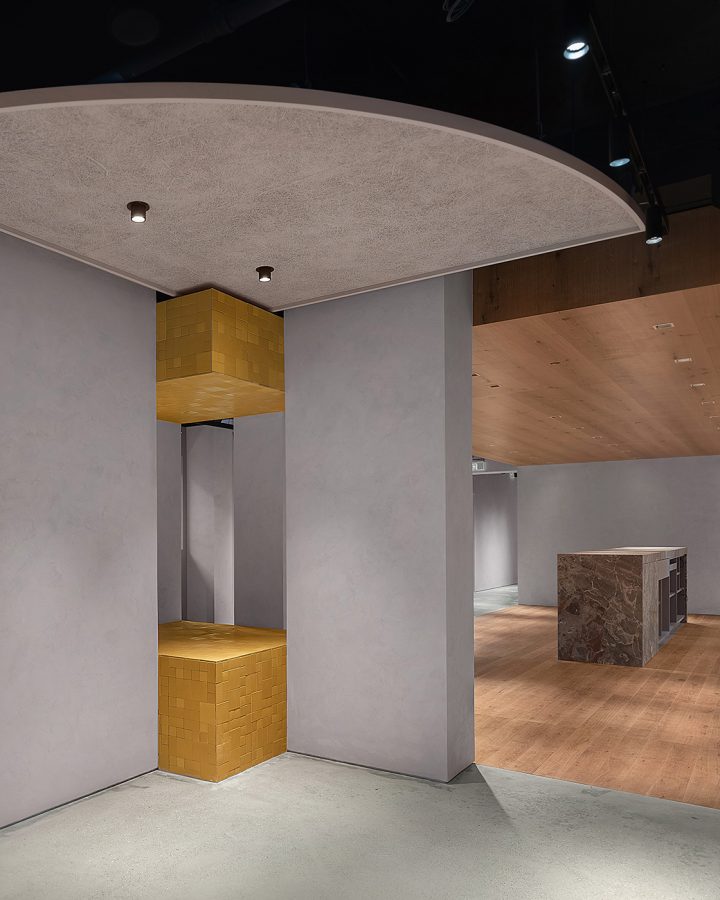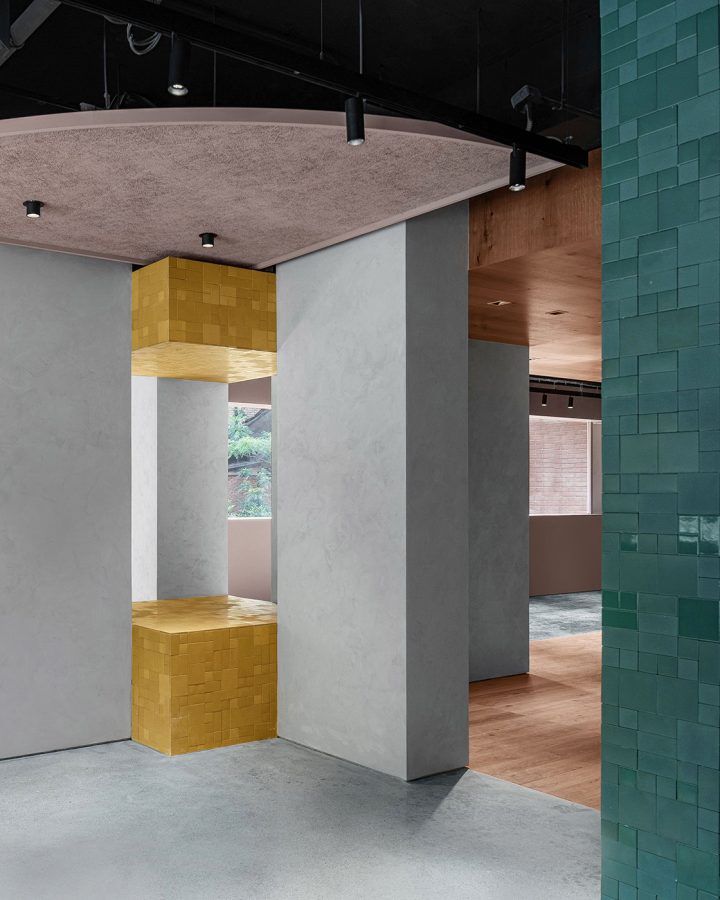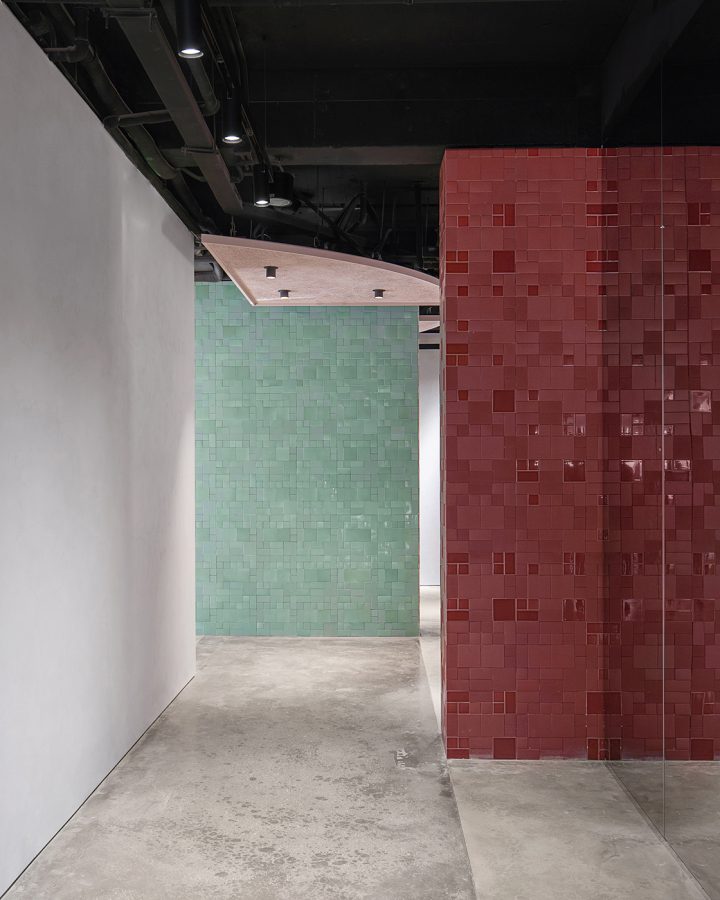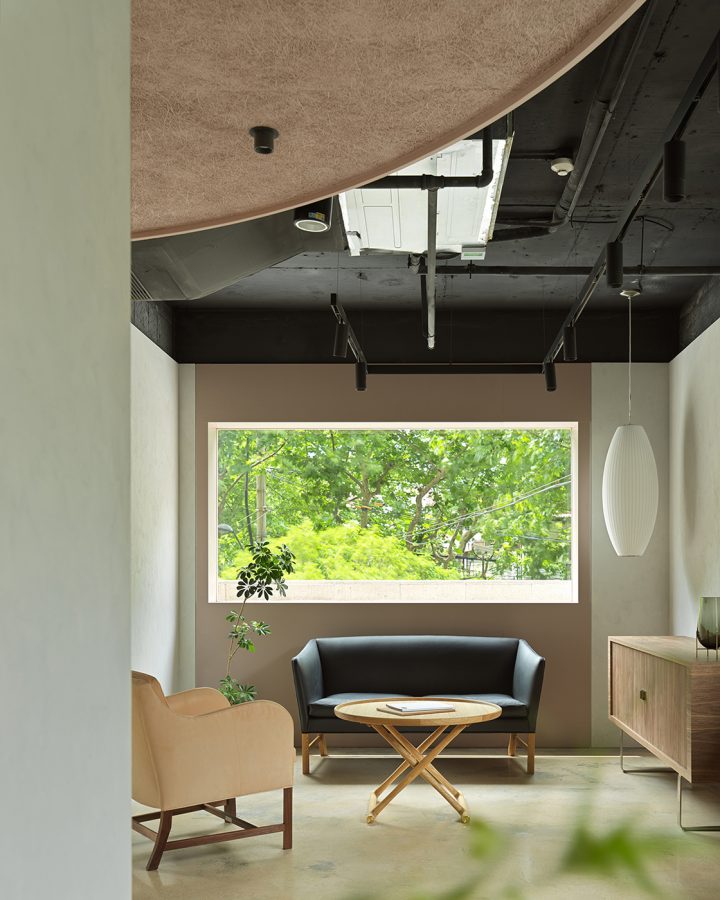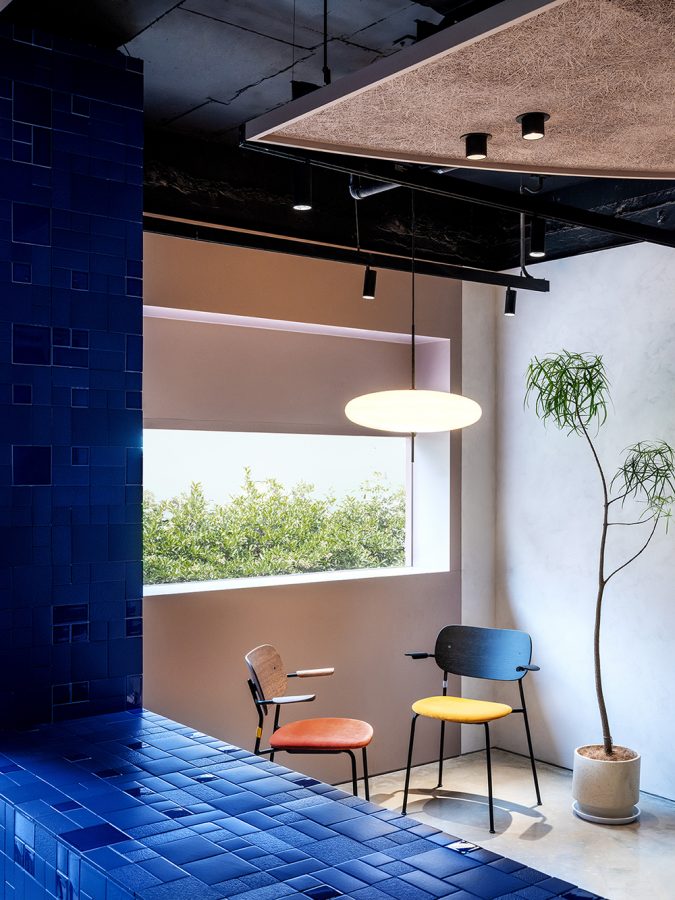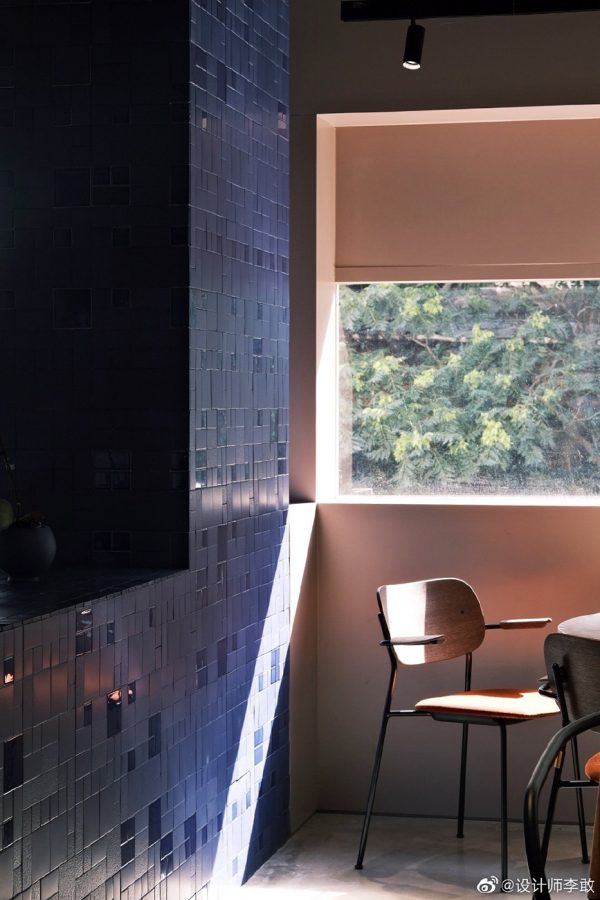Cabana Shanghai Anfu Store Cabana上海安福路店
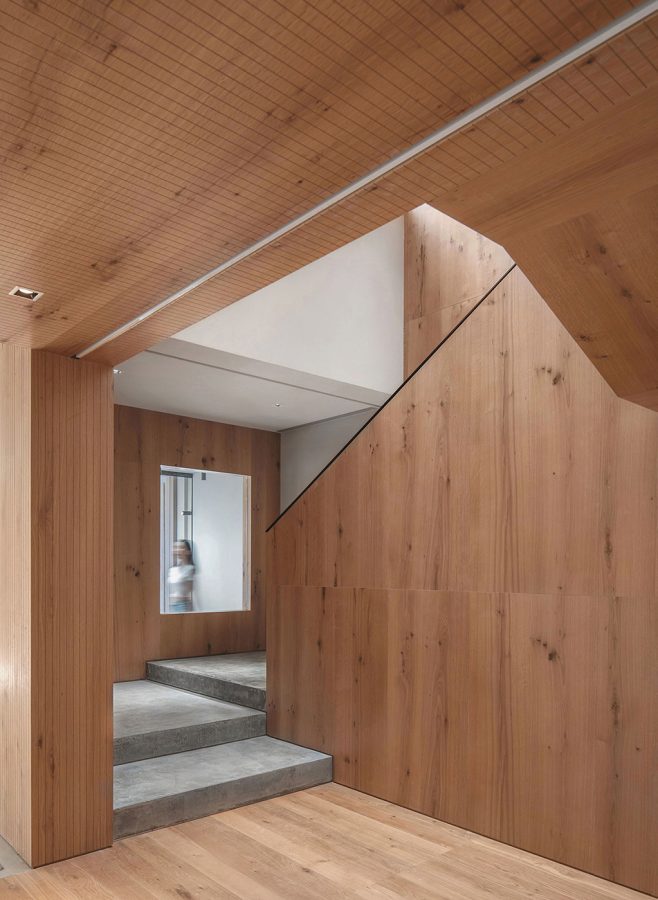
In the Cabana Store on Anfu Road in Shanghai, for the first time, we literally recreated a “cabana” (cabin).
在cabana上海安福路店中,我们第一次真的再现了一个“小木屋”。
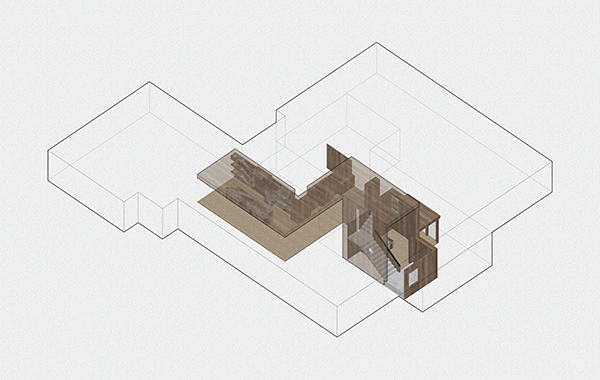
The stairwell is entirely wrapped in wood veneer. On the ground floor, the wooden structure is inserted horizontally into the display area, interrupting the continuity from the entrance to the depth, forming a richly layered foyer space. On the second floor, the wooden structure extends into a corridor and the cashier area at its end, separating the display space from the middle, dividing it into two areas with entirely different characters. This “cabin structure”, which connects the upper and lower floors, appears to be a cubist sculpture placed vertically in the space, with light shining into the structure from every angle. The smoked oak was chosen for its texture and color are the closest to our imagination of a cabin by the sea; while the flooring made of thin strips of wood and the seams on the wood veneer are also an imitation of the raw materials commonly used in such cabins.
楼梯间被木饰面整个包裹起来。在一楼,木结构横向插入展陈区域,打断从入口往纵深发展的平面布局,形成一个层次丰富的门廊空间;在二楼,木结构延展成为一条廊道和它尽端的收银区域,将展陈空间从中间分开,隔开了气质迥异的两个不同区域。这个将上下两层连接起来的“木屋结构”从形态上看,像是垂直置入空间中的立体主义雕塑,光从上下左右照入这个结构。烟熏橡木的肌理和色泽都接近我们对海边小木屋的想象,而细碎木条拼接而成的地板、木饰面上的板缝,也是对木屋中粗粝材料的戏仿。
The specific form of “cabin” embodies our reflections on “decoration” as a design approach. Since modernism, after a series of re-examinations of construction methods, structural and constructional logic, “decoration” has become a negative term that most architects tried to avoid. However, when we as architects engage in the practice of interior design, it is inevitable to confront decoration. From Cabana Flagship Store in Sanlitun North District in Beijing, to Cabana’s new locations in Jing’an Kerry Center and on Anfu Road in Shanghai, through our spatial experiments, we have been reflecting on how to give decoration its legitimacy.
小木屋的出现,也代表了我们对“装饰”这一设计手法的思考。进入现代主义以来,经过一系列对建造方式、结构、构造逻辑的反思,装饰成了一个建筑师们避之唯恐不及的负面词汇。然而,当我们作为建筑师参与到室内设计的实践中,装饰又是无法避免的。从cabana北京三里屯北区旗舰店,到上海静安嘉里中心店到安福路店,我们在一系列的空间实验中,思考的是如何赋予装饰其正当性。
In the Sanlitun Store, we created a series of “false” structural elements: from the dome, the triangular crossed beams, to the huge heterogeneous columns and drapery-like walls. In the Jing’an Kerry Store, we used various materials to clad the walls, manipulating the atmosphere of each area through the colors, textures and patterns of the materials. In Cabana Anfu Road Store, our concept is to create a new interior sub-space (or multiple sub-spaces) through a stage setting-like approach. A variety of structural elements – both functional and false – along with the superimposition of different materials are applied as elements of the “set”, while the tension and dramaticness of the space is the core of the design.
在三里屯店,我们制造了一系列虚假的结构构件:从穹顶到三角交叉的梁,巨大的异性柱体和帷幔式的墙;在静安嘉里中心,我们使用不同的材料包裹墙体,通过材料的色彩、肌理、图案来控制空间的氛围。在cabana安福路店,我们通过舞台布景似的手法创造一个(或多个)新的室内空间,不管是真真假假的结构构件还是材料的堆叠,都是布景的元素,而空间的张力与戏剧性,才是设计的主题。
Apart from the “cabin” structure as the main theme, the central display area on the second floor is divided into two parts. The area directly accessible by the staircase is partitioned into nine small, regular spaces by beams and columns arranged in a tic-tac-toe pattern. Through revolving doors and sliding doors, we rendered these small spaces the possibility to be arranged and combined to adapt to different display themes. The doors are thick and wide, almost like movable walls. The revolving doors are clad with mirror finish stainless steel, while the sliding doors are clad with brushed stainless steel. The space therefore has been partitioned and at the same time extended by the dazzling play of light, which obscured the volume and form of the space. Gray paint, plaster, concrete in different shades, gray marble – the nuances of gray are superimposed with cladding stainless steel, together creating a neutral color tone as the background of the play.
除去点题的“小木屋”,二楼主要的展陈区域分为左右两边。走上楼梯直接到达的区域被井字排列的梁与柱定义为9个小而规整的空间。我们通过旋转门和移门,让这些小空间有了根据不同展陈主题排列组合的可能性。门厚重而宽大,更像是活动的墙体。旋转门的表面覆盖镜面不锈钢,而移门的表面则覆盖着拉丝不锈钢,在隔断空间的同时,迷离的光影游戏又延展了空间,让空间的体量和形态变得不再一目了然。灰色漆面、涂料、深浅不同的混凝土、灰色大理石——,深深浅浅的灰与不锈钢板一起,叠加出一个中性的色彩调子,作为空间游戏的背景。
Across the corridor and the cashier, the theme on the other side of the space is “color”. For some unknown constructional reason, there are several irregular-shaped walls pre-existed in this area of the building, we decided to keep these walls and made some more on purpose, covering them with the tiles specifically developed for this project by ourselves. The tiles come in three different sizes: 5x5cm, 5x10cm, and 10x10cm, each with three different finishes: glossy, matte, and coarse-grained. We took inspiration from the window latticework of traditional Chinese gardens to design a new pattern – or better to say, a “coding principle”, and then clad the walls with tiles of different sizes and textures according to the principle. These walls are colorful in deep red, dark green, mustard yellow, sky blue, beige, off-white, indigo and black. The various patterns and textures of the tiles endowed the walls a subtle shimmering effect, quietly and vividly, like a group of art installations scattered throughout the space.
穿过走廊和收银台,另一侧空间的主题是色彩。这一侧空间有一些建筑本身不知道出于何种结构上的考虑形成的异形墙体,我们又特意制造了一些,贴上了自己研发的瓷砖。瓷砖有三种不同的规格:5x5cm,5x10cm,10x10cm,每一种规格又有三种不同的表面:亮釉,哑光釉,粗糙面。我们从园林的窗格图案中得到灵感,设计出一种新的纹样,或者说是一种编码规则,再应用这个规则,将不同规格和肌理的瓷砖拼贴在墙体上。这些不同色彩的墙:深红、墨绿、芥末黄、天青、米色、灰白、靛蓝和黑色,因为其纹样和不同肌理闪烁出星星点点的光。如同一个个艺术装置散落在空间中,静谧而缤纷。
Project details
-
PROJECT LOCATION 项目地点:Anfu Rd, Xuhui District, Shanghai, China 中国上海市徐汇区安福路
-
WORKING RANGE 工作范畴:Interior design 室内设计
-
TYPOLOGY 项目类型:Commercial 商业空间
-
BUILDING AREA 建筑面积 (m²):600 m²
-
PROJECT STATUS 项目状态:Built 建成
-
DESIGN STARTING 设计开始:2020/10
-
CONSTRUCTION FINISHED 项目落成:2021/05
-
PRINCIPLE DESIGNER 主持设计师:蔡为, Philipp Buschmeyer
-
DESIGN TEAM 设计团队:孙瑞琪, 陈海霞, 陈石见, Martina Huber
-
LIGHTING CONSULTANT 灯光顾问:Lumia Lab 麓米照明
-
CONSTRUCTION 施工方:Beijing Million Partner Construction Company Limited 北京亿达和信装饰工程有限公司
-
PHOTOGRAPHY 摄影师:Seemore Studio 四目工作室



